Car Radio History

Listening to your favorite tunes while driving in your car has become a given. Whether talk radio saves your sanity in rush-hour traffic or a special playlist sets the scene on a sprawling cross-country drive, you probably can’t live without your car radio.

Car radio paved the way for car audio technology to come.
In the past decade alone, car audio has advanced leaps and bounds. Playing music in the car is something we take for granted. There’s so much to choose from, beyond standard and satellite radio—eight tracks evolved into cassette tapes, cassettes into CDs, CDs into MP3 players, and MP3 players into iPhone docking. In-car iPhone docking comes full circle by offering countless Internet
radio app options, like iTunes, Slacker, and Pandora.
You May Believe Your Ears When You Hear How The First Car Radio Came To Be.
-
The first broadcast receiver and radio were introduced in the early 1900s. The typical radio included a radio box, a speaker box, and a few batteries, along with a wire antenna. This portable radio was exactly what you would find used as a car radio at the time. Portable battery-powered radios were adapted for car installation.
-
A perfect early example is the car radio adapted and installed by George Frost, President of the Lane High School Radio Clubs in Chicago. In 1922, Frost installed a portable battery-powered radio in his Ford Model T. In the same time frame, cities throughout the US experimented with the use of car radio receivers for police patrol cars to improve communication and response time.
-
Other experts believe that the first mass-produced car radio was the Transitone in 1927. It was then that the idea for a car radio spread like wildfire. Variations of the early car radio were produced in the years to follow—like the Automotive 3002 manufactured by Delco Radio Corp. in 1929, along with the in-car radio manufactured in the 1929 GM Cadillac LaSalle.
1922 was a big year for the car radio.
Some historians believe that the first car radio was introduced by Chevrolet in 1922 for only $200; the clunky radio came with an antenna that covered the car roof, oversized batteries that fit under the seat, and two large speakers behind the seat.
Initial reactions: to the first car
radio were priceless.
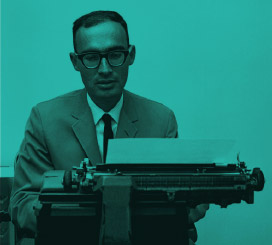
Michael Lamm, automotive historian, explains, “Opponents of car radios argued that they distracted drivers and caused accidents, that tuning them took a driver’s attention away from the road, and that music could lull a driver to sleep.”
Before the radio and the car merged, drivers couldn’t fathom listening to music or talk radio while operating an automobile. After early car radios were introduced in the late 1920s, legislators proposed radio ban laws for drivers in Massachusetts and Missouri in 1930.

-
Warn drivers of bad weather
or, Poor road conditions
The RMA also pointed out that car radios could help to keep a drowsy driver awake.
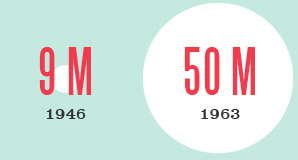
Luckily for drivers today, anti-radio laws never took off.
Car radio use became mainstream and expected in the decades to come. By 1946, there were 9 million cars on the road with radios. That number jumped to 50 million cars by 1963, or over 60% of cars with radios.
We haven’t even scratched the surface of
the history of the car radio. Here are a few fun facts to get the party started:
The first radio was invented in the late 1890s; over 20 years later, the car radio concept was conceived.
The first wireless radio was invented in 1895 by Guglielmo Marconi, one step closer to car radio installation.
The Radio Act of 1927 cast a wider net for the car radio; the legislation reassigned radio stations to clear frequencies and ensured reliable radio operation for the public’s best interest.
The first Motorola car radio was the Motorola model 5T71 introduced in 1930 by the Galvin Corporation.
The now famous Motorola brand was named after automotive electronics, purposely using the prefix “motor.”
The first digital radio transmissions were broadcast in 1990.
By 1998, Internet broadcasting was heavily regulated; the Digital Millennium Copyright Act was passed to force Internet radio to pay extra royalty fees above standard radio stations.
Every car audio system contains a head unit, considered the “brain” of the system.
A typical car audio system is installed with a combination of woofers, tweeters, and midranges, used to produce lower frequencies, higher registers, and midrange frequencies, respectively.
Today’s car radio/audio systems are available in increasingly compact sizes; some in-car systems can be activated with a remote control.
Online Radio Has Yet to Conquer the Car% of American internet user aged 12+ who listen to online/offline
radio, by location (as July 2013)
Source: Edison Research
The Complete History of the Car Radio Crank up that dial and listen to where it all began
as we explore the evolution of the car radio
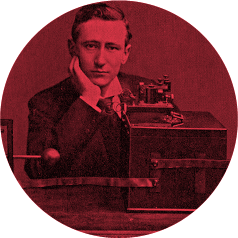 1896
1896
Considered the father of the radio, Guglielmo Marconi patented the wireless telegraph. Guglielmo Marconi
 1919
1919
The first radio station in the US broadcast in Pittsburgh.
 1922
1922
Chevrolet produced what many believe to be the first in-car radio for $200.
 1930
1930
Motorola was the first company to develop and mass-produce a car radio; the company was first called Galvin Manufacturing Corporation and later changed its name to Motorola, translated as the “sound in motion.” The Galvin car radio was considered expensive at the time, costing $130 compared to $540 for a Ford Model A Deluxe.
FM radio was introduced
for the first time.
1949-1950 Ford Car Radio Source: lbcunited.com
 1952
1952
Drivers enjoyed the first in-car FM radio, produced by Blaupunkt.
1953 Becker manufactured the first seek-search car radio; drivers were allowed to “sample” and/or choose each available radio station for several seconds before moving on to the next.
 1955
1955
Chrysler manufactured vehicles with the first on-demand music; a small turntable was produced in high-end vehicles in 1955, though the concept never took off.
 1960
1960
William Lear invented the first eight track tape player, offered as a car audio option alongside car radio in the 1960s and 1970s. Transistor radios of the 1960s inspired more compact car radios that required less power and space; bulky car radio vacuum tubes were eliminated.
 1962
1962
Phillips produced the first compact cassette, a popular audio option built in to car radio systems from the 1970s to the 1990s.
1969 The first in-car stereo was manufactured in the Becker Europa, including a tuner that amplified two channels instead of a customary single channel.
FM radio began to broadcast stereophonic music.
AM/FM radio was
manufactured as the
standard in all new cars.
 1974
1974
Blaupunkt made waves again when they introduced the first car radio to provide traffic information, using ARI.

Bose amped up the average car radio by partnering with GM to create the first designer car stereo system, marketed to Buick, Oldsmobile, and Cadillac buyers.
 1985
1985
The first car radio with an integrated CD player was introduced in the Becker Mexico Compact Disc.
Sony released the first car radio CD changer to accommodate multiple CDs for a whopping $1000.
 2001
2001
Satellite radio services were offered for the first time. Tim McGraw was the first artist to play on the airwaves of satellite radio.

Digital AM and FM radio offered listeners even more station options; Internet delivered radio content was referred to as a “podcast.” In the same year, BMW was the first manufacturer to offer car radio iPod integration.
 2007
2007
Slacker Internet radio launched with traditional and specialty stations compiled by professional DJs. Overall Internet radio listeners hit an impressive high at 57 million per week. Jumping on the Internet trend, automakers allowed drivers to sync car radio systems with smartphones, including impressive safety features like voice activated control.
4 in 10 Americans listened to Internet radio at roughly 10 hours per week.
The Chevy Spark went entirely digital in the MyLink system that did away with the traditional CD player/car radio; the Spark car radio system worked as an app integrated with a smartphone to store radio and offer access to Internet radio.
2013 Vehicle manufactured car radios could be upgraded with full-feature car audio systems for several hundred to several thousand dollars—including:
- voice-control digital audio playback
- hands-free calling
- and turn-by-turn GPS with traffic tracking.
2014 A number of car radio/audio systems were still manufactured with CD players, along with extras like built-in Bluetooth.

The Sound Of Music84 Years In the Making
84 years since the introduction of the first car radio, and car
radio technology has changed drastically.
-
vehicle stereos
costNow, it is literally impossible to find a vehicle without a manufactured in-car radio. Due to the popularity of car radio and audio systems, drivers began to pour money into vehicle stereos in the 80s and 90s. In some cases, a tricked out car stereo could cost more than the actual car!
-
car stereo theft
It’s no wonder that car stereo theft became a major problem in the 90s. Thankfully, FBI statistics confirm that car stereo theft has dropped by more than half over the span of 15 years, from 1994 to 2009. Compare the one million car stereo thefts in 1994 to 400,000 thefts in 2009.
-
premium factory sound systems
Manufacturers did their part to reduce the risk of car stereo theft by installing higher-quality in-car stereos that were harder to dismantle, steal, and resell. Automakers began to take advantage of this by charging customers extra for premium factory sound systems in the late 90s. Sound system upgrades were an easy sell since they weren’t compatible with other makes and models of vehicle and could cut down on stereo theft.
If you compared a 1930s car radio to a millennial
model, you’d be shocked at the difference.
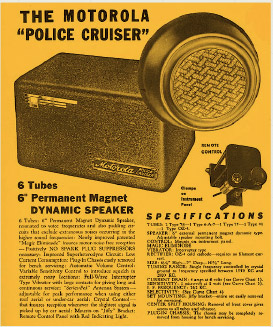
The early car radio was simple and no-frills. It was designed to enhance the average driving dashboard and experience by providing radio options and nothing more.
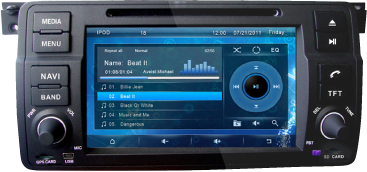
Today’s car radio has met the demand of the tech-savvy driver by offering more features and upgrades than any one driver can take advantage of. Each car audio system comes equipped with a head unit, or the brain of the system. The head unit includes a radio tuner, a CD player (in some models), a preamp, and an amplifier. Car audio head units can provide basic radio listening, as well as advanced connectivity in iPod navigation or USB flash drive synchronization.

The next time you test drive a new car, pay special attention to the car audio system. You can still enjoy the beloved car radio on an afternoon drive. You can also take advantage of a long list of sound system features with high-tech functions to improve driver comfort and control:
- solar powered stereo
- voice-activated stereo
- smartphone-integrated dashboards
- and even AccoustiVision technology that turns any fixed glass surface in a vehicle into a loudspeaker.
Yes Car Radio/Audio Technology Is Ever-Changing, With Automakers Constantly Trying To Outdo One Other.
For the consumer, this is to your advantage. Year after year, car radio systems will only continue to get better. What was once an expensive technology—like stereo voice activation and control—may soon become the standard in every manufactured vehicle.

In a 2012 US Automotive Emerging Technology Study conducted by JD Power and Associates,
of drivers ages 18 to 25
of drivers ages 26 to 37
confirmed that they would purchase a fully autonomous vehicle
One thing’s for certain car radio will never be the same.

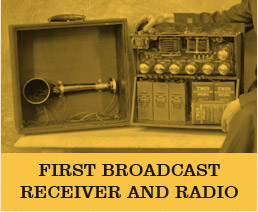
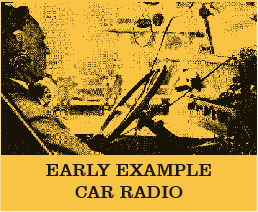
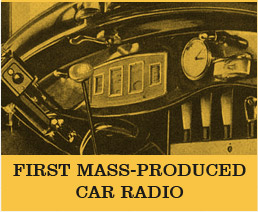













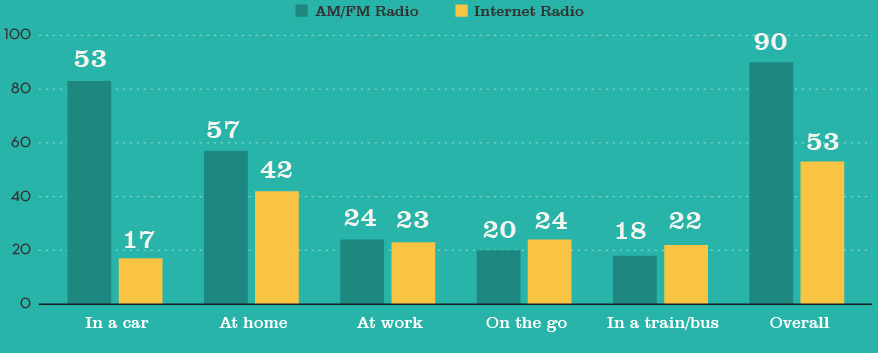



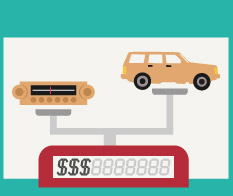
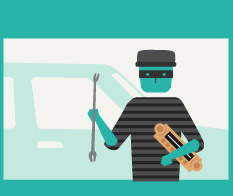

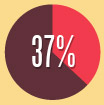 of drivers ages 18 to 25
of drivers ages 18 to 25 of drivers ages 26 to 37
of drivers ages 26 to 37